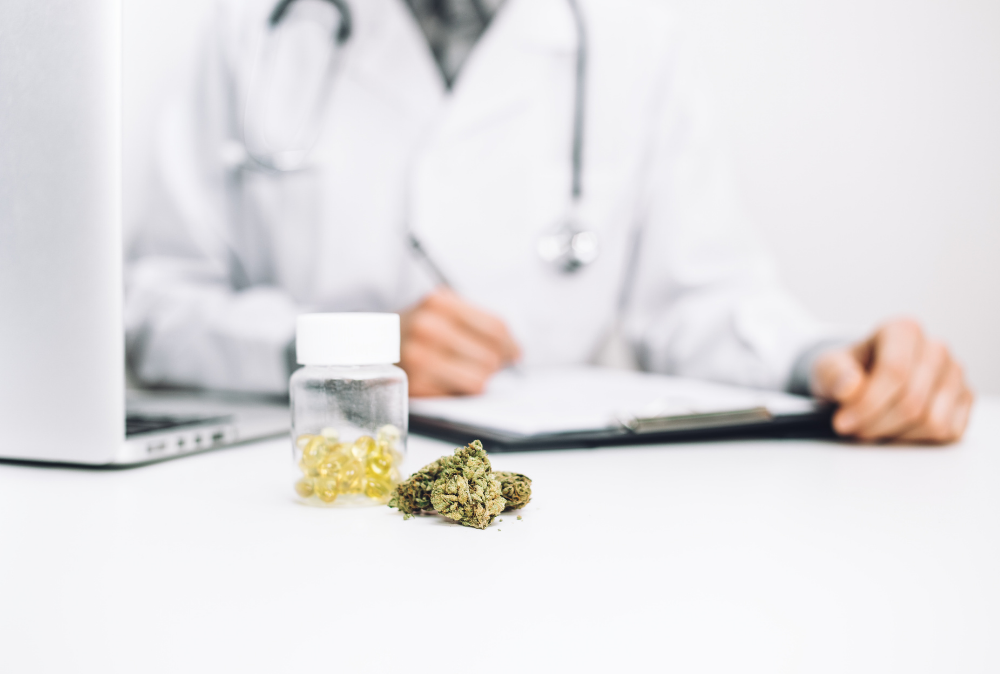
With any new medication, there’s a bit of a learning curve as you adjust to it. Plant-based medicine, namely Medical Cannabis, is no different. To help our patients have a positive first experience, and therefore a positive relationship with cannabis, we’ve compiled what we feel to be the most helpful tips and bits of info for new users. (And by the way, if you’re more of a visual learner, check out the guide version of this information!)
Cannabis Sativa: The scientific name for the cannabis plant. You might refer to it as cannabis, weed, pot, marijuana, or Mary Jane, and that’s just fine. The two varieties of cannabis, Sativa and Indica, are considered subspecies.
Cannabinoids: Compounds that interact with our bodies’ cannabinoid receptors, produced naturally within our bodies and found in the Cannabis Sativa plant. THC and CBD are the most well-known, but there are at least 256 known cannabinoids.
Cannabidiol (CBD): One of our favorite cannabinoids! CBD helps relieve pain, works as a sleep aid, decreases stress, and much more. Unlike THC, CBD doesn’t get you high and even helps buffer the effects of THC when needed.
Endocannabinoid System (ECS): We all have an endocannabinoid system (ECS) that produces and processes cannabinoids. In fact, it makes up over half of our central nervous system! The ECS works hard to regulate lots of symptoms, including memory, digestion, motor function, immunity, inflammation, appetite, pain, blood pressure, bone growth, and the protection of nerve and brain tissues, just to name a few.
Entourage Effect: When each part of the plant works together in perfect harmony, primarily cannabinoids and terpenes, it creates an desirable and highly therapeutic experience known as the entourage effect. It’s a beautiful thing.
Isolate: A highly concentrated, purified form of an individual cannabinoid. CBD is one of the most common isolates you’ll find.
Terpenes: Terpenes are compounds found in a variety of plants, including cannabis. They’re responsible for the aromas, flavors, and even some of the therapeutic benefits of cannabis.
Tetrahydrocannabinol (THC): There are 4 major types of THC present in the cannabis plant, THCa, THCv, Delta-8 THC, and Delta-9 THC, and they all have different medical benefits. For example, Delta-9 THC is responsible for giving you a head high.
Tincture: A liquid that contains a concentrated herbal extract. Tinctures can be ingested under your tongue or added to food and drinks.
In dispensaries and Medical Cannabis pharmacies, you’ll find that products fall into one of three categories: Indica, Sativa, and Hybrid. This can help you to estimate the effect that the product will induce. Effects of different strains may vary, but for the most part, a few common characteristics remain when categorizing cannabis products.
Reach for an Indica product when you’re looking for:
Reach for a Sativa product when you’re looking for:
And of course, when you're looking for a little bit of both, reach for a Hybrid product.
Under Utah Medical Cannabis law, qualified, cardholding patients can purchase or possess a limited amount of the following:
Also set by Utah Medical Cannabis law, patients are limited to purchase 113g (4oz) of unprocessed cannabis flower and up to 20g of total composite THC and all other medicinal forms (cartridges, wax, oils, creams, tinctures, etc.) within a 28-day period. Patients are also expected to stay within those parameters for possession.
Note: Utah law prohibits a Medical Cannabis cardholder from using any cannabis product in public view, except in the event of an “emergency medical condition.” In the case of an emergency medical condition, the cardholder may administer a medicinal dosage of cannabis in medicinal form. Read more about state laws and safety here.
Start low and go slow.
An average low dose is about 1-2.5mg THC, but this may vary depending on how strong your product is. Follow dosage guidelines as provided. If you do take too much, you may feel uncomfortable, but that feeling will go away and isn’t life threatening.
Be patient with edibles.
Keep in mind, it could be awhile before you feel any effect. Resist taking additional edibles for at least 4-6 hours until you know your tolerance.
Follow your recommended dosage.
Your QMP or PMP has a treatment plan in mind. If you need more or less, they can adjust this for you.
Keep your card active.
Once you get your Medical Cannabis Card, keep an eye on your expiration date. You’re only legal with an active card!
Keep your card with you.
Have your card on you every time you have cannabis or a dry herb vape in your possession.
Stay in touch.
Reach out to your medical provider with any questions, concerns, or changes to your treatment. They are there for you.
Marijuana is remarkably safe. Based on thousands of years of use and extensive research, we know it’s impossible to fatally overdose on cannabis. That being said, if you’re unfamiliar with the plant and how your body responds to it, you should know these possible side effects:
If you do feel uncomfortable, don’t panic! Everything will be okay. While you wait for time to pass, you can try:
It’s important to know what you’re getting into. While that phrase rings true for most things in life, it is especially true for cannabis. For example, if you need relief quickly, you probably won’t want to reach for an edible, which can take up to an hour or more to start working.
While we created this little guide to be helpful, it’s incredibly important to work alongside a medical provider any time you are using Medical Cannabis. If you are looking for a cannabis provider, the team at KindlyMD can help. Schedule an appointment today to discuss if Medical Cannabis treatment is right for you. We’ve also put together some helpful resources on our education site, UtahMarijuana.org. Remember: cannabis medicine is not one-size-fits-all and takes some trial and error for any user. Patience, determination, and a good Care Team go a long way. Congratulations on your first step towards wellness!
